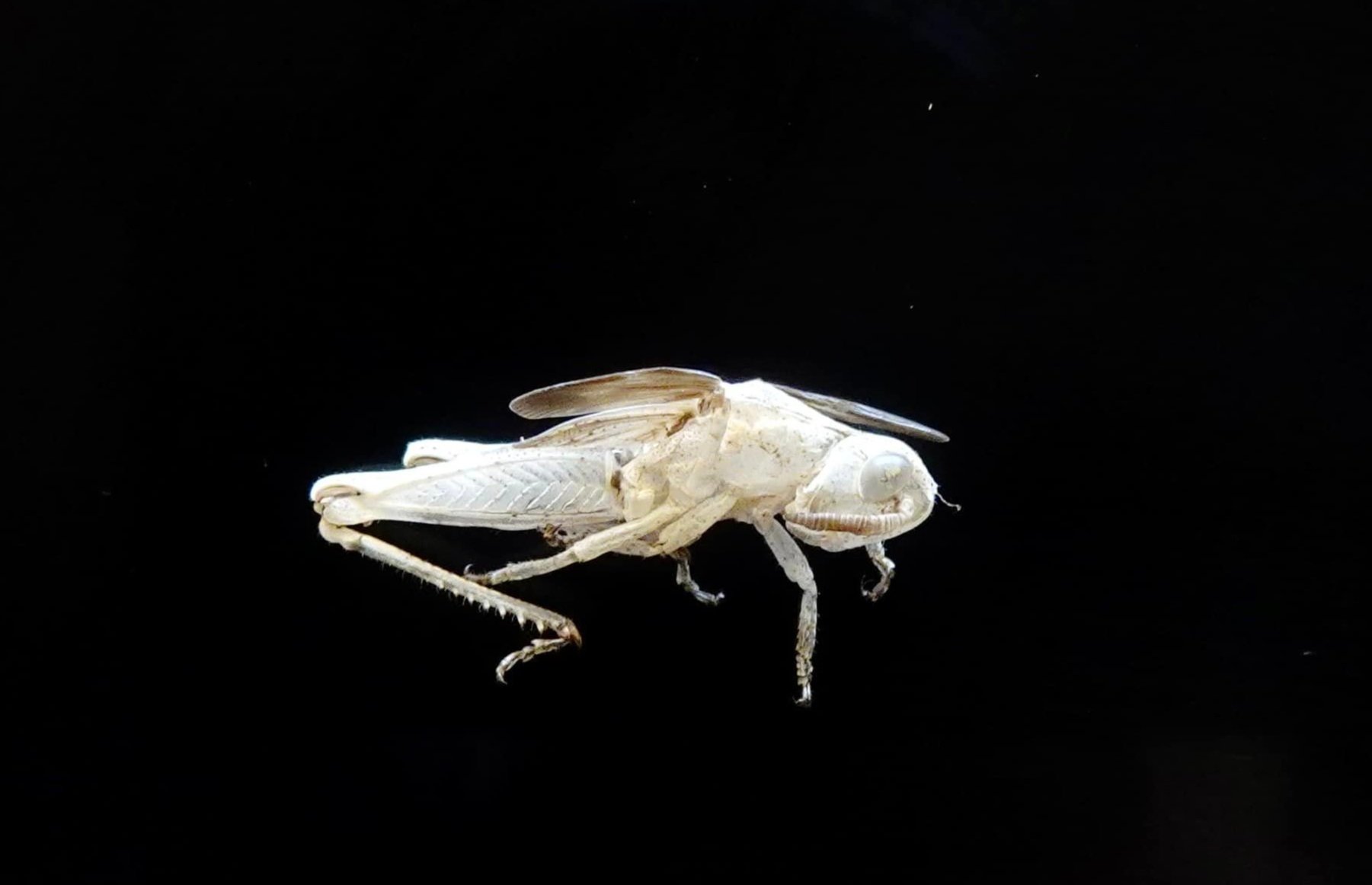Wildlife Wednesday - Signs of Spring
By Andy Ames
I missed the big snow in the Estes Valley last week but got to observe some interesting insect activity down in the Front Range. Recent warm temperatures and plenty of moisture have provided an early glimpse of spring.
When grasshoppers hatch from their eggs they emerge as nymphs - miniature versions of an adult except without wings. As they grow, however, nymphs go through what is called an incomplete metamorphosis, shedding or molting their skin and emerging larger with slight changes and developing wings. They go through this process 5 or 6 times before finally emerging as an adult as shown above. Adult grasshoppers have fully developed wings and long antennae.
Shed skin of a grasshopper nymph.
Millipedes also molt in order to grow. Millipedes are born with a short body and only 3 pairs of legs. With each molt they add additional segments with 2 pairs of legs each. It may take 2-5 years for a millipede to reach adult form. Millipedes feed on decaying organic matter and are often found under rocks and logs. Lacking the waxy outer layer of other insects, however, millipedes can easily dehydrate when out in the open.
One insect that thrives in the winter is the Winter midge. Although it looks like a mosquito it does not bite. In fact, the adult does not even eat. The larvae feed on algae and microorganisms and this carries them through the rest of their lives. Winter midges may be spotted on snow near springs or streams and are active in temperatures even below freezing. Males feature feathery antennae as seen in this photo.




